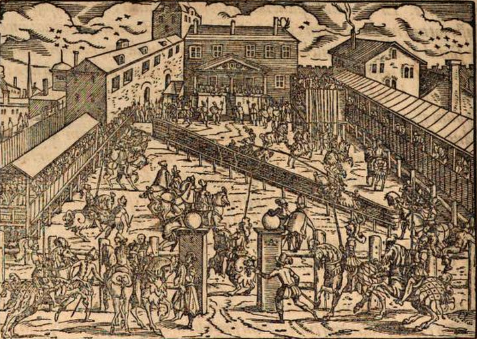|
Siege Of Krujë (1477–1478)
The fourth siege of Krujë (Ottoman Turkish: آقچه حصار نك چهارم محاصرهسى; ) by the Ottoman Empire of Krujë in Albania took place from early 1477 to June 1478, almost ten years after the death of Skanderbeg, the main military commander of the Albanian rebellion against the Ottomans. The long siege resulted in the capture of the city after three previous failed sieges. Demoralised and severely weakened by starvation and lack of supplies from the year-long siege, the defenders surrendered to Sultan Mehmed II, who had promised to let them go unharmed in return. However, the Ottomans massacred all the men in the city and took the women as slaves. Defeat of the relief army Evrenos-zâde Ahmed Bey and Turahanoğlu Ömer Bey were sent in front of the army to build roads and repair bridges. Despite this, the army's movements were made very difficult by the harsh Albanian terrain. Thus, the army, advancing in great difficulty, came to Krujë. Mehmed wante ... [...More Info...] [...Related Items...] OR: [Wikipedia] [Google] [Baidu] |
Ottoman–Venetian War (1463–1479)
The First Ottoman–Venetian War was fought between the Republic of Venice with its allies and the Ottoman Empire from 1463 to 1479. Fought shortly after the capture of Constantinople and the remnants of the Byzantine Empire by the Ottomans, it resulted in the loss of several Venetian holdings in Albania and Greece, most importantly the island of Negroponte (Euboea), which had been a Venetian protectorate for centuries. The war also saw the rapid expansion of the Ottoman navy, which became able to challenge the Venetians and the Knights Hospitaller for supremacy in the Aegean Sea. In the closing years of the war, however, the Republic managed to recoup its losses by the ''de facto'' acquisition of the Crusader Kingdom of Cyprus. Background Following the Fourth Crusade (1203–1204), the lands of the Byzantine Empire were divided among several Latin states, ushering in the period known in Greek as ''Latinokratia''. Despite the resurgence of the Byzantine Empire under the Pal ... [...More Info...] [...Related Items...] OR: [Wikipedia] [Google] [Baidu] |
Skanderbeg
Gjergj Kastrioti (17 January 1468), commonly known as Skanderbeg, was an Albanians, Albanian Albanian nobility, feudal lord and military commander who led Skanderbeg's rebellion, a rebellion against the Ottoman Empire in what is today Albania, North Macedonia, Greece, Kosovo, Montenegro, and Serbia. A member of the noble House of Kastrioti, Kastrioti family, Skanderbeg was sent as a hostage to the Ottoman court. He graduated from the Enderun School and entered the service of the Ottoman sultan Murad II () for the next twenty years. His rise through the ranks culminated in his appointment as of the Sanjak of Dibra in 1440. During the Battle of Nish (1443), Battle of Nish in 1443, he deserted the Ottomans and Liberation of Kruja (1443), became the ruler of Krujë and nearby areas extending from Petrelë to Modrič, Struga, Modrič. In March 1444, he established the League of Lezhë, with support from Albanian nobility, local noblemen, and unified the Albanian principalities. In ... [...More Info...] [...Related Items...] OR: [Wikipedia] [Google] [Baidu] |
